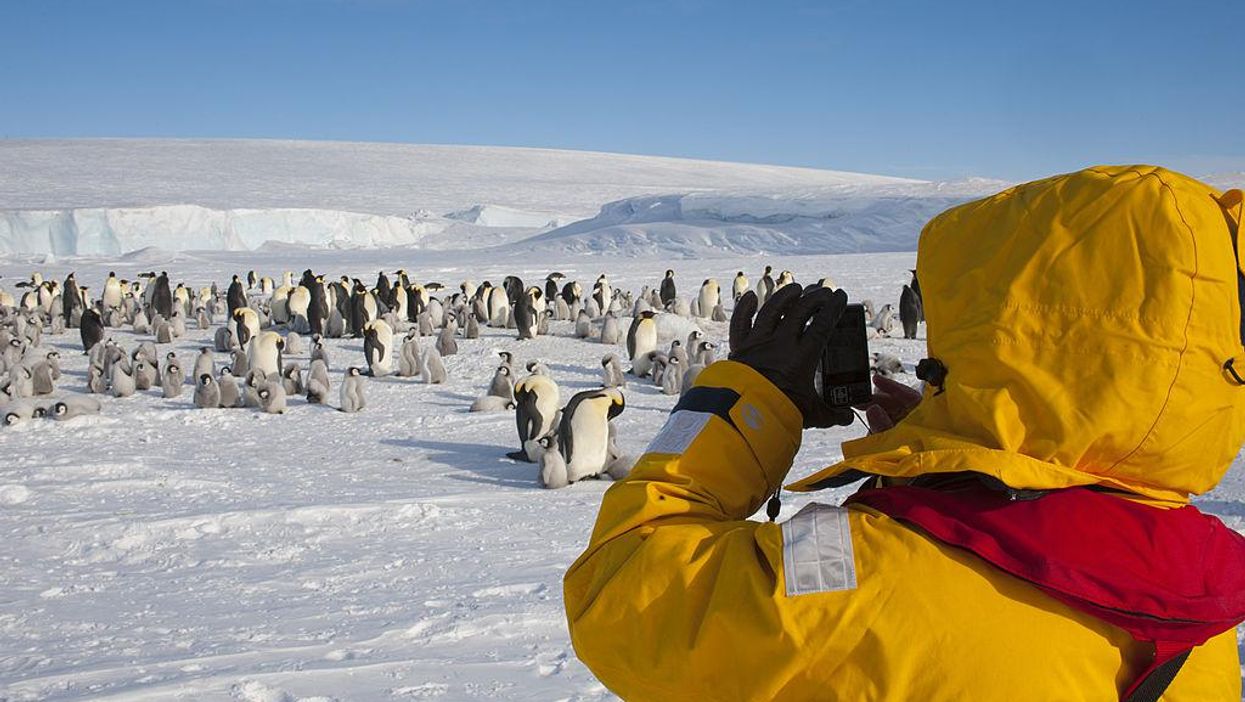
Photo by Wolfgang Kaehler/LightRocket via Getty Images

Microplastics have been found in freshly fallen snow in Antarctica for the first time in recorded history.
The Guardian reported that this unnatural development poses a distinct threat to the health of Antarctica’s unique ecosystems and could accelerate the melting of the continents ice and snow.
Microplastics — which are individually smaller than a grain of rice —have previously been found in Antarctic Sea ice and surface water but this is the first time in recorded history that they have been found in fresh snowfall.
Research conducted by Alex Aves, a PhD student from the University of Canterbury, and his supervisor Dr. Laura Revell, chronicled the recent phenomenon.
For his research, Aves collected snow samples from the Ross Ice Shelf in late 2019 to determine whether microplastics had been transferred rom the atmosphere into the snow. Until Aves conducted this research, there had been very little research about the presence of microplastics on the continent of Antarctica.
Dr. Revell said, “We were optimistic that she wouldn’t find any microplastics in such a pristine and remote location.”
Dr. Revell indicated that she had instructed Aves to also collect samples from various established roadways on the continent, where microplastics have previously been recorded, so that “she’d have at least some microplastics to study.”
As it turns out, Dr. Revell’s precautions were unnecessary as plastic particles were found in every one of the 19 samples Aves gathered from the Ross Ice Shelf.
Aves said, “It’s incredibly sad but finding microplastics in fresh Antarctic snow highlights the extent of plastic pollution into even the most remote regions of the world.”
Aves found an average of 29 microplastic particles per liter of melted snow, which is reportedly higher than recorded marine concentrations that were gathered from the surrounding Ross Sea and Antarctic Sea ice.
There were 13 different types of microplastic found in the samples Aves gathered. The most common type found was PET which is commonly used in the manufacture of plastic drink bottles and clothing.
Atmospheric modeling suggested that these microplastics may have traveled thousands of kilometers through the air as it is unlikely that the humans currently residing in Antarctica have caused enough plastic pollution to generate the requisite concentration of microplastics in the atmosphere.
Microplastics and plastic pollution have become remarkably far spread as they reportedly been found at the summit of Mount Everest and in the depths of the planet’s oceans.
People inadvertently eat and breathe microplastics according to some studies and other studies found that microplastic particles cause damage to human cells. One study from 2021 found that airborne microplastics are “spiraling around the globe.”